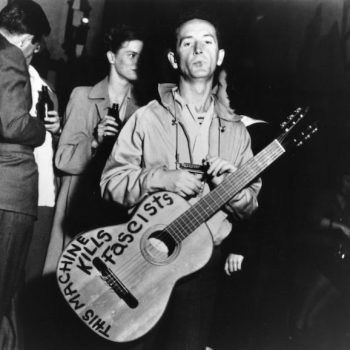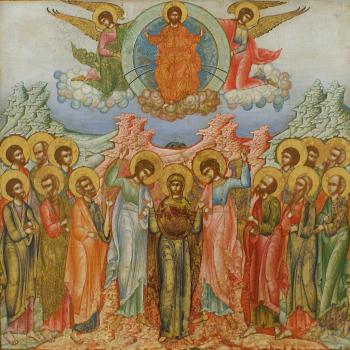By the end of the ‘60s the prominent role played by Jews in the leading civil rights organizations was deemed an affront to black autonomy, at least in the more vocal precincts of black opinion. The considerable influx of Jewish money to the movement was now seen as paternalistic, demeaning, and oppressive. James Baldwin denigrated Jewish financial support as mere “conscience money.” The Congress of Racial Equality (CORE) and SNCC became racially exclusive, decreeing that they would no longer accept white volunteers. One Jewish civil rights professional explained this pivotal development in the following way: “Among professionals in inter-group relations, the Jews are the longest in the field, the most skilled and most experienced. Negro professionals resent this. Negroes have developed their own leadership and they don’t want whites -- Jews or anybody else -- to be in the forefront of the civil rights fight.” The traditionally liberal leadership of the movement, epitomized by Martin Luther King, Jr., was supplanted by new organizations like the Black Panthers and a new group of intellectual rabblerousers -- figures like Cleaver, Carmichael, H. “Rap” Brown, Malcolm X, and Harold Cruse.
Still, to chronicle the excesses of an excessive era is to lose sight of a fundamental reality: The conflict between blacks and Jews was never as ideologically hardened as the enticing and simplistically dramatic headlines would lead you to believe. There was nuance. It was buried beneath waves of rhetoric, but it was there. “This rhetoric,” according to Cheryl Greenberg, “was not indicative of a widespread view in the black community. It was a widespread view only amongst radicals.”
In many respects, much of the black-Jewish tension was a direct result of progress. As greater racial equality was achieved, it was no longer a sufficient principle around which a mass movement could congeal. The coalition had achieved passage of the Civil Rights Act, bringing about the legal end of segregation and an endorsement of voting rights the following year. “The black-Jewish coalition didn’t end because it failed,” argued the black-Jewish activist Julius Lester. “It ended because it succeeded.” Political success, as it so often does, birthed political complexity.
The fundamental divide that tore at the fabric of the traditional civil rights coalition was not between blacks and Jews so much as it was between liberals and radicals, between those that clung to the goal of assimilation and those who thought the system itself was rotten at the core and needed to be overthrown. “SNCC repudiated the NAACP as much as it repudiated Jewish groups,” says Greenberg.
This was a black-Jewish spat in large part because a disproportionate number of the leading white activists in the civil rights movement were Jews. Any turn against white participants in the movement was inevitably directed at Jews. Naturally, they did not appreciate being cast out of the movement and pigeon-holed as a reactionary social element simply because they happened to be white. Reactionary! How dare they! There was perhaps no greater insult in the milieu of ‘60s radicalism.
A few memorable snapshots in this saga are:
1979. Andrew Young, United States Ambassador to the United Nations, resigned his post after it was revealed that he had unauthorized contact with a representative of the Palestine Liberation Organization. The issue quickly devolved into a black-Jewish stand-off when it was perceived that Jewish organizations lobbied for Young’s dismissal. As Jesse Jackson said at the time: “There’s tremendous tension in the air around the nation over the forced resignation.”
1984. In conversation with a Washington Post reporter, Jesse Jackson refers to Jews as “Hymies” and to New York City as “Hymietown.” At first Jackson denies the remarks, but things escalate when Nation of Islam leader Louis Farrakhan goes on the radio in Jackson’s presence warning Jews: “If you harm this brother [Jackson], it will be the last one you harm.” A month later Jackson appears before national Jewish leaders to admit his guilt and ask for forgiveness, though he refuses to denounce Farrakhan.
1991. The Nation of Islam publishes a notorious piece of pseudo scholarship titled The Secret Relationship Between Blacks and Jews that, amongst other incendiary charges, blamed Jews for the slave trade.
1991. After a car that was part of the motorcade escorting Rebbe Menachem Schneerson hits and kills a black child, a mob of African Americans shouting “Kill the Jews” repeatedly stabs a young rabbinical student and leaves him to die on the street in Crown Heights, Brooklyn.
1993. Farrakhan aide Khalid Abdul Muhammed mounts the stage at Kean College in New Jersey and accuses Jews of “sucking our blood in the black community.” Three months later, in the face of escalating pressure, Farrakhan calls a press conference and announces that Muhammed has been removed from his post for the time being. “While I stand by the truths that he spoke,” Farrakhan says, “I must condemn in the strongest terms the manner in which those truths were represented.”




